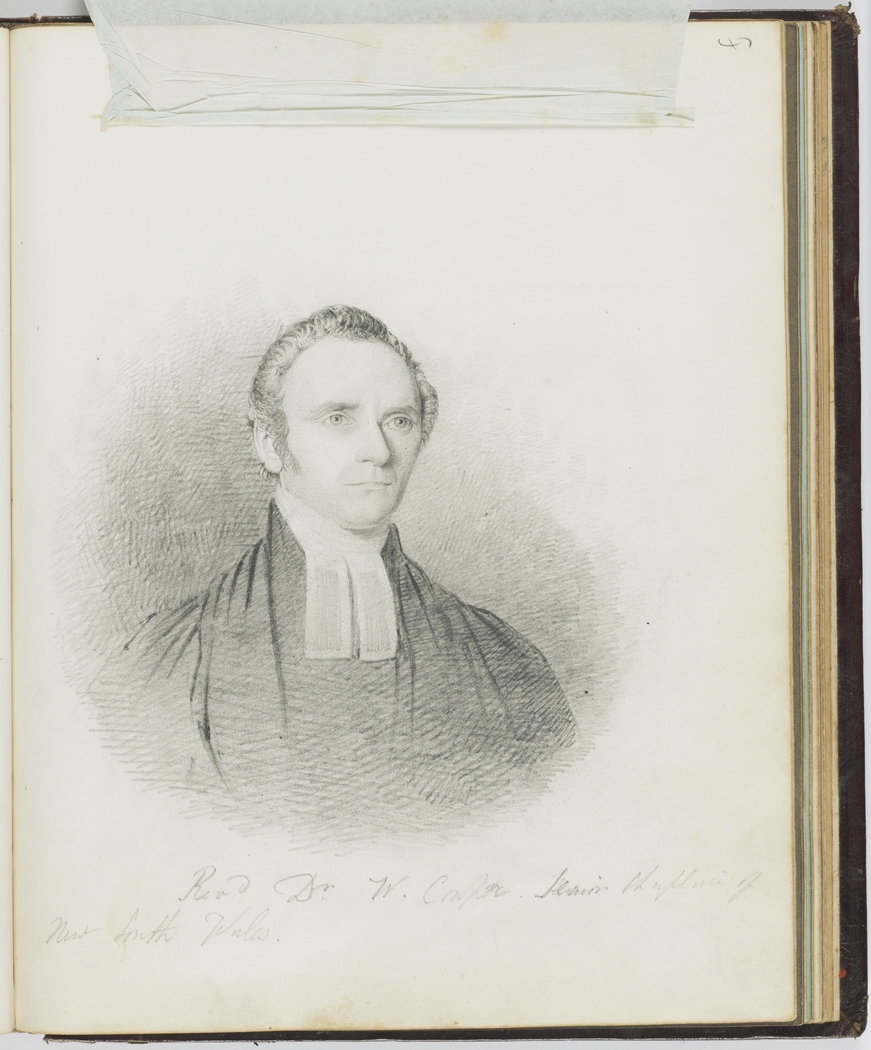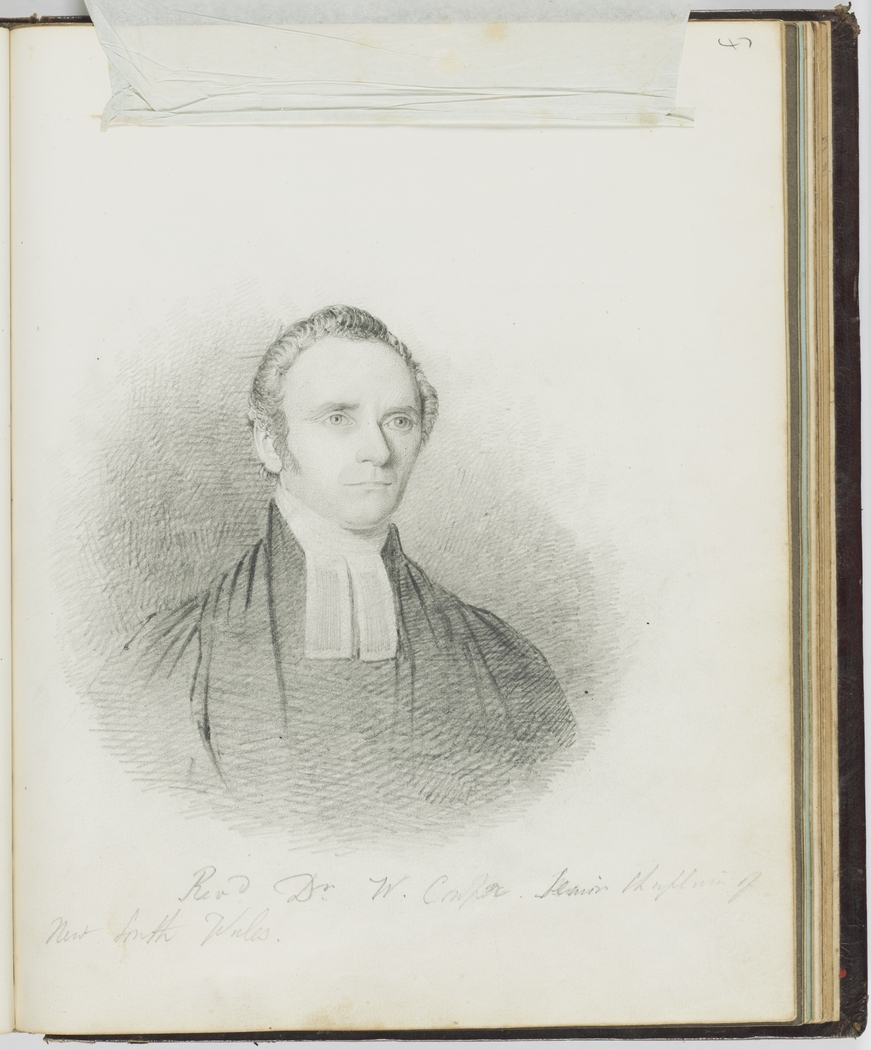Christian foundations
By 1800 the population of Sydney was approximately 2,500. In 1802 Governor King divided the colony into two parishes. Sydney Town was to be the Parish of St Philip's and the Parramatta area was to be the Parish of St John's. In 1803 the impressive St John's Church was opened in Parramatta by Reverend Samuel Marsden.
In October 1800 Rev. Richard Johnson returned to England with his family in the Buffalo. Reverend Samuel Marsden took over the role of Principal Chaplain to the colony.





Samuel Marsden's relationship with the government, and in particular, Governor Macquarie, was often difficult. Macquarie and Marsden disagreed on a range of issues. In particular, Marsden's sense of position and social order was offended by Macquarie's support of emancipists in the community. Macquarie's authoritarian style also clashed with Marsden's role as Principal Chaplain. Marsden was not allowed to introduce new versions of the Psalms which Macquarie viewed as "Methodist". He also ordered that Government notices be announced during services. As a landowner and successful farmer Marsden also objected to government control and interference in commercial activities.
In January, 1818, Macquarie summoned Marsden to Government House and in front of witnesses described him as 'the Head of a seditious low Cabal and consequently unworthy of mixing in Private society'. He commanded him to avoid his presence except upon public duty.




From 1810 a number of different denominations entered the religious landscape of the Colony. In 1803 the first authorised Roman Catholic Mass was celebrated by Father James Dixon in Sydney. Father James Dixon was one of three convict priests transported from Ireland after the 1798 Rebellion of the United Irishmen. At the time approximately one third of the population of the settlement were Catholics.
Between 1810 and 1830 representatives from the major denominations were established in the colony. In 1818 Reverend Walter Lawry, a Methodist, arrived from England and was stationed at Parramatta. In 1820 the first appointed Roman Catholic priests, Fathers John Joseph Therry and Philip Connolly, arrived in the Colony. Also in 1820 German-born convict Joseph Marcus conducted the first Jewish service. The Presbyterian minister, Reverend John Dunmore Lang, arrived in Sydney in May 1823. The first Baptist service was conducted by Scottish Minister John McKaeg in 1831.








Before the 1820s it was accepted that the Anglican church was the established church in Australia. The Church of England worked with the State to maintain order and organise the education system. With the influx of other denominations the influence of the Anglican church diminished. The shift in power and influence created tension between the different denominations and between the church and government. Both Governors Brisbane and Darling were sympathetic to the Catholic and Wesleyan churches who provided support to free settlers and convicts. Darling's successor, Richard Bourke showed further sympathy for the role of other denominations through the Church Act of 1836 which provided financial assistance to denominations other than Anglican.
The First New South Wales census was taken in 1828. The 36,484 respondents were asked to nominate their religion as Protestant, Catholic, Jewish or 'Mohammedan and pagan'. In 1828 there were reportedly 19 people classified in the last category.
Made possible through a partnership with Vincent Fairfax Family Foundation
Australian Jewish community and culture
The Jewish community in Australia has made a significant contribution to the development of Australian society and culture since the establishment of the colony in 1788.




















